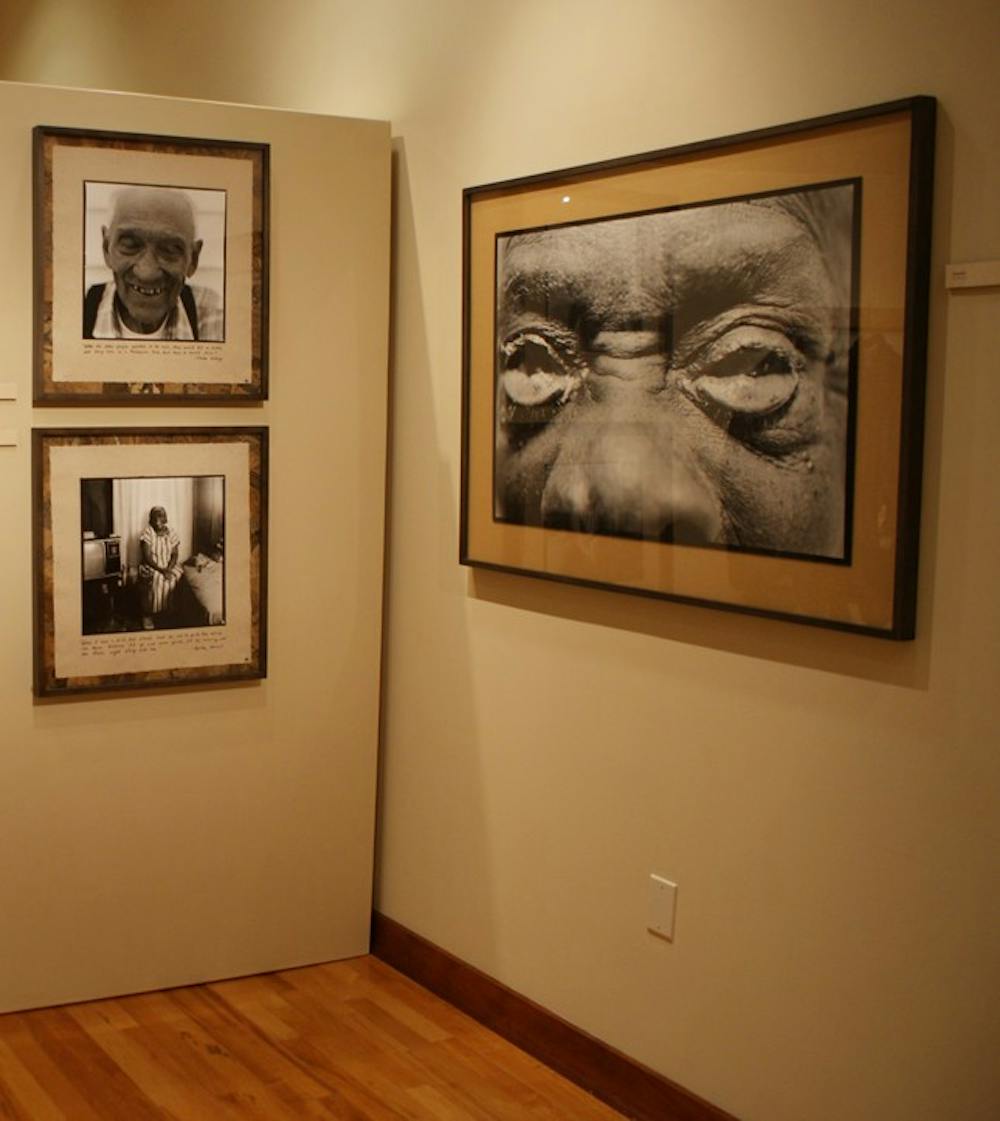Ragged suit coats, an artist’s personal journal and faint voices looping in the background tell an intimate story that photographs alone do not.
“Corapeake,” a multimedia exhibit by artist Kendall Messick, is currently on display at the Robert and Sallie Brown Gallery in the Sonja Haynes Stone Center.
Messick, based in New York City, chronicles the intimate stories of the aging residents of the town of Corapeake, N.C. in an exhibition focused on preserving the memories of those often forgotten.
“‘Corapeake re-centers the rural experience as the foundation for the African-American experience,” said Joseph Jordan, director of the Stone Center.
“The exhibit draws attention to the generational divide that often defines Corapeake and communities like it as relics of the past.”
The Stone Center’s art committee chose to feature the town of Corapeake — a largely African-American community in eastern North Carolina — as part of this year’s focus on exploring identity and racial politics, Jordan said.
Photographs from Messick’s seven-year multimedia project are in the Smithsonian museum’s permanent collection, and the accompanying documentary has been shown on PBS affiliates throughout the country, including UNC-TV.
“Corapeake” was Messick’s first significant work. The artist has since gone on to create other long-term multimedia projects and many photographs, one of which is a part of the collection at New York’s Museum of Modern Art.
Messick’s vision for his project came when he visited the hometown of his best friend from Wake Forest University, Brenda Parker Hunt.




